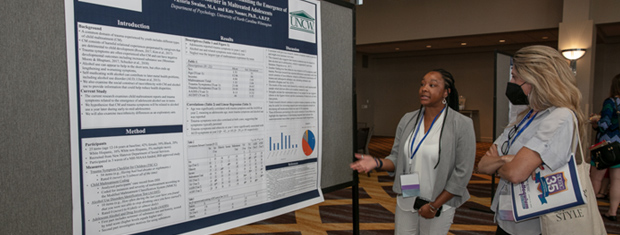




The APSAC Advisor is a peer reviewed quarterly news journal for professionals in the field of child abuse and neglect.
The APSAC Advisor provides succinct, data-based, practice-oriented articles that keep interdisciplinary professionals
informed of the latest developments in policy and practice the field of child maltreatment. It is designed to highlight
best practices in the field and publish original articles and current information about child maltreatment for professionals
from a variety of backgrounds including medicine, law, law enforcement, social work, child protective services, psychology,
public health and prevention in the U.S.
 If you wish to learn more about submitting an article to the Advisor, please click here.
If you wish to learn more about submitting an article to the Advisor, please click here.
This library contains Advisor issues dating back to the first issue in 1988. The most recent issue appears at the top.
Scroll down to select past issues by year and issue number. Once a publication appears in the box, you
can use the Enlarge button to open the document in a new window or tab (depending on how your browser is set up).
This will allow you to view the document with larger print.
To print a document, first use the Enlarge button to open the document in a new window or tab. Then use your browser's Print command.
To return here from a new tab, close the tab. To return from a new window, click your browser's Back button.
In the listing below, click on a year and issue number to see the articles in that publication.
2013 Number 4
The CornerHouse Forensic Interview Protocol: An Evolution in Practice for Almost 25 Years
The author reviews the CornerHouse Forensic Interview Protocol,™ a widely used protocol in the United States that has evolved and changed with the field since 1990. The article clarifies the Protocol as it has evolved and is now used in the CornerHouse Training Program, reviewing its guiding principles, recent adaptations, structures, and use of interview tools. Although there are many valid ways to approach the forensic interview itself, from structured protocols to flexible guidelines, the CornerHouse Forensic Interview Protocol™ explores a child’s experience in a way that is both forensically sound and respects the child’s individuality, while accommodating adaptation to meet a myriad of local community standards.
Gathering Information From Children About Child Neglect
This article focuses on gathering information about child neglect, providing strategies for questioning that advise maximizing the use of open-ended questions/probes. The author first contextualizes neglect-related questions/probes by a brief discussion of the structure of a child interview, and then discusses a continuum of questions (from more open-ended to more close-ended) and how the continuum relates to inquiry about child neglect. She concludes by reviewing strategies for asking about important people in the child’s life who may elicit information about child neglect and by suggesting questions in domains that are directly focused on child neglect: the child’s care and control, the child’s environment, and parental behaviors that may result in neglect.
Interviewing Victims and Suspected Victims Who Are Reluctant to Talk
The authors review the factors that affect child behavior and responsiveness during interviews, looking at specific parts of the NICHD protocol that address these issues. They then discuss revisions to the protocol over time and the revised protocol’s effects on children’s willingness to be cooperative and disclose abuse, finding that, although the effects of protocol type varied in strength depending on individual and case characteristics, emerging differences were always in the same direction: the revised protocol was always associated with more allegations. The authors conclude best practice recommendations need to underscore the importance of supportive yet nonsuggestive practices when investigating possible occurrences of abuse as well as the importance of using structured protocols for shaping effectively the relationship with children.
The authors review the challenges presented to investigators in cases with child pornographic images and how these images affect victims and victim disclosure during investigation. They discuss important points about using these images in the forensic interview process and offer techniques that can be considered for introducing them, including details as to how they can be presented and how this presentation should be specifically incorporated into FBI and other existing protocols. The article concludes by noting that further research needs to be conducted to increase our understanding of best practices in this area and to ensure that the needs of child pornography victims are being met as part of the investigative interview to address the special needs of these exploitation victims.
APSAC Advisor 25(4): Full Issue